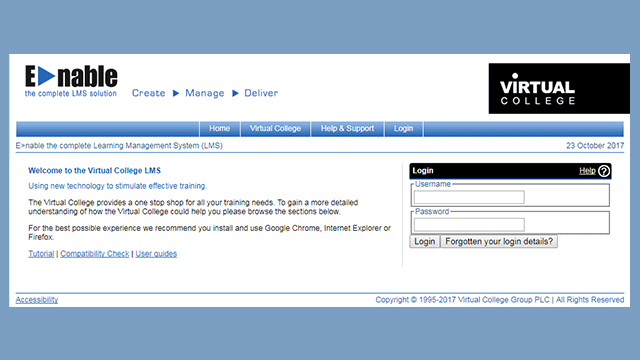Leadership and Management Training Courses
Our collection of CPD Approved Leadership and Management training courses are designed to build the skills, knowledge, and confidence of your leaders and managers, helping your business to grow and meet its goals.
High-Quality Online Leadership and Management Courses
Our collection of Leadership and Management training courses covers everything you need to build the skills, knowledge, and confidence of your leaders and managers, helping your business to grow and meet its goals. With over 45 high-quality online Leadership and Management courses we cover essentials topics including;
- Coaching
- Managing Change
- Performance Management
- The Role of the Manager
- Communication
- Managing Teams
- Personal Effectiveness
- Supporting Your Team's Health and Wellbeing Remotely
- Performance Managing Remote Teams
And more...

All-Access Training Subscription
Our Leadership and Management training suite can can be purchased as part of our Training Subscription package. You will also get access to over 200 training courses covering topics such as Food Hygiene, Business Compliance, Safeguarding, Health and Safety and Personal Development.
Our ready-to-go subscription is simple. Pay for the employees you’re training, give them 12 months’ unlimited access to our ever-expanding library of training courses, and get it set up in 48 hours or less.
Alternatively, if you’re looking to buy a small number of courses you can simply purchase through our online shop.
Hear it From Us
With many years' of learning and development, online course development and implementing innovative training solutions, Sarah Baker - the Managing Director of Virtual College by Netex, talks you through our Leadership and Management courses and why it's so important that organisations invest in their leaders.
Our leadership courses can be for everybody, with a wide range from Emotional Intelligence and The Role of the Manager to our 10 Power Skills Courses. Designed to help you unlock your potential, enhance your abilities and excel in both the workplace and everyday life.
Find out more about our all-access training subscription
Our ready-to-go training subscription is simple. No long contracts, no hassle, just quality courses that your learners will thank you for. It’s a no brainer. Speak to us today.
12-month subscription | A licence for each employee who requires training | Unlimited access to our 200-course library | Hassle free, 48-hour set up
Leadership and Management FAQs
-
What is a manager?
A manager is often responsible for a team or department within the workplace. They often have a day-to-day relationship with their team and will be the decision maker. A manager’s role will vary depending on the type of workplace they are in but they are often responsible for budgets, the team they work in, the goals or outcomes of the team and much more.
-
What is a leader?
A leader is someone who has the vision to see how things can be improved and is able to lead a team on the journey to making that vision happen. A good leader will have a positive effect on the team working with them and is a source of motivation and drive to make things happen. Leaders are not only applicable in the workplace but in every day life such as Prime Ministers, parents and other prominent figures.
-
What is the difference between leadership and management?
Though the roles are very similar and have many crossovers, there are still significant differences between leaders and managers. A leader’s main role is to lead a group of people toward a main goal whereas a manager will manage the team and hold responsibility for things such as budgets and equipment. Leaders will often have management responsibilities too, which are often judged to be the signs of a good leader. Managers can move into leadership and the two roles commonly work in unison.
-
Why is leadership and management important?
Leadership and management is important in the workplace because without them there would be no decision makers, no strategy for the direction the business is going in and no one would be responsible for the outcomes of the teams and departments. Leaders and Managers are not only essential to the smooth running of the business but are also good for morale of the team.






















